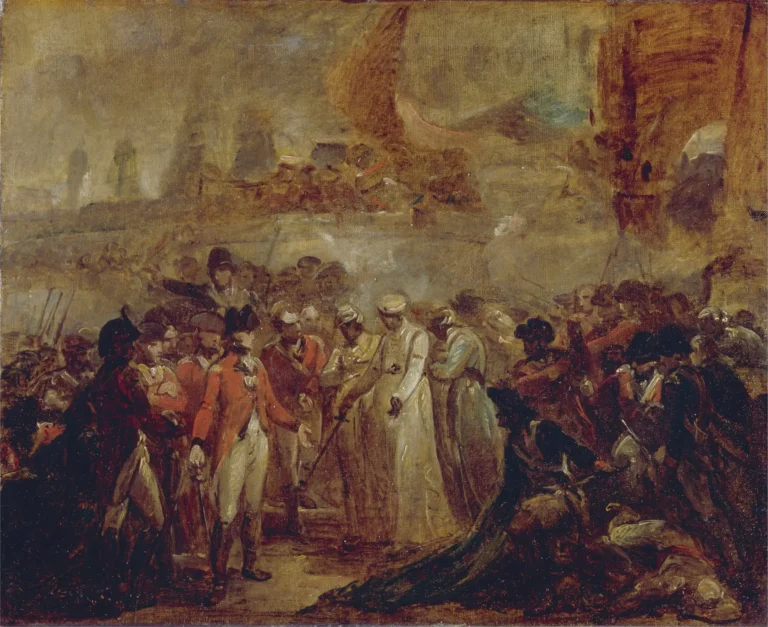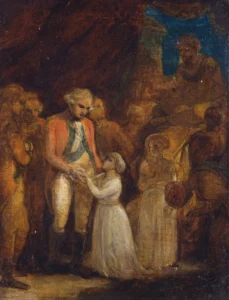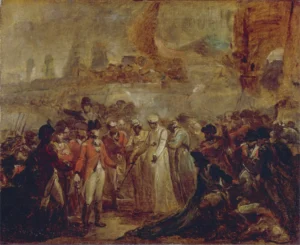The Surrender of the Two Sons of Tipu Sahib, Sultan of Mysore, to Sir David Baird
Henry Singleton's masterpiece, The Surrender of the Two Sons of Tipu Sahib, Sultan of Mysore, to Sir David Baird. beautifully encapsulates a crucial moment in the Anglo-Mysore Wars. Painted circa 1800, this 17 x 21 inch oil on canvas artwork portrays the emotional dynamics of surrender, vividly reflecting the tension between colonial powers and the indomitable spirit of Indian royalty. Singleton employs rich colors and meticulous detail to convey the gravity of the scene, making it a compelling study of power, conflict, and history.
Circa 1800
About the Artwork
This captivating painting illustrates a moment from the complex tapestry of the Anglo-Mysore Wars, a series of conflicts that reshaped India’s political landscape in the late 18th century. Tipu Sahib, the Sultan of Mysore, fiercely resisted British colonial expansion, and after his eventual defeat, his two sons were captured. Artist Henry Singleton cleverly dramatizes their surrender to Sir David Baird, evoking themes of loss, dignity, and the harsh reality of colonial encounters. This artwork stands not only as a representation of this historical episode but also as a vehicle for discussing broader colonial relations and their enduring impact on cultural identities.
Did You Know
Liked what you see? Add it to your collection.
Enjoyed reading? Share it.
... continued
Key Details
- Title: The Surrender of the Two Sons of Tipu Sahib, Sultan of Mysore, to Sir David Baird
- Date: Circa 1800
- Medium: Oil on canvas
- Dimensions: The painting measures 17 x 21 inches (43.2 x 53.3 cm)
Historical Context
The painting depicts a significant historical event where the two sons of Tipu Sahib, the Sultan of Mysore, are surrendered to Sir David Baird, a British military officer. This event was part of the broader context of the Anglo-Mysore Wars, a series of conflicts between the Kingdom of Mysore and the British East India Company.
Current Location
The painting is part of the collection at the Yale Center for British Art, specifically within the Paul Mellon Collection, although it is currently not on view.








